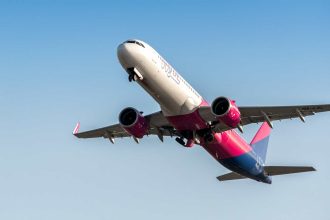Ukraine needs armored vehicles—badly.
So it’s good news for the Ukrainian war effort that Croatia is ready to replace its fleet of Cold War-vintage tanks and fighting vehicles. The Croatian government has agreed to sell 30 old M-84 tanks as well as 30 old M-80 fighting vehicles to the German government, which will then donate the vehicles to the Ukrainian government. The Croatians plan to spend the German funds on new German-made Leopard 2A8 tanks.
The 46-ton M-84 is a Yugoslav version of the Soviet T-72. The 15-ton M-80 was Yugoslavia’s answer to the Soviet Union’s BMP-1. The Ukrainian armed forces operate hundreds of T-72s and BMP-1s, so they should have no problem integrating M-84s and M-80s.
With 60 ex-Croatian tanks and fighting vehicles, Ukraine could equip two battalions—or half of a brigade. Not coincidentally, Ukrainian officials recently announced they would upgrade the new 156th Infantry Brigade to a mechanized brigade.
The 156th Mechanized Brigade is one of 14 new 2,000-person brigades the Ukrainian ground forces have formed recently—at least 10 of which fall under the army. Most of these new army brigades, all with designations in the 150s, started out as infantry brigades lacking much heavy equipment.
A Ukrainian mechanized brigade normally has 31 tanks and 93 fighting vehicles. Ten mechanized brigades would need 310 tanks and 930 fighting vehicles. But as recently as September, Ukrainian Pres. Volodymyr Zelensky warned that his government couldn’t even equip four of the 14 new brigades with heavy weapons. The shortfall, it seemed, was nearly 200 tanks and 600 fighting vehicles.
Ukrainian industry generates some new vehicles on its own—usually by pulling old vehicles out of long-term storage and upgrading them with additional armor and better fire controls.
Many vehicles come from abroad, however. In the 32 months since Russia widened its war on Ukraine, Kyiv’s allies have pledged around 900 tanks and 1,400 fighting vehicles as well as thousands of lighter armored personnel carriers and armored trucks.
But the Ukrainians have lost almost exactly as many armored vehicles as they’ve received from their allies: 900 tanks and 1,400 fighting vehicles. All that is to say, Ukraine might be able to generate enough armored vehicles to keep its older ground combat brigades—around 100 in all—in action. But it’s struggling to generate vehicles for any new brigades it forms.
Not forming new brigades isn’t really an option. Many of Ukraine’s older brigades have been in combat non-stop since the Russians invaded in February 2022. They’re tired. And that exhaustion can have dire consequences.
Consider the 72nd Mechanized Brigade, which held out in the fortress town of Vuhledar in southern Donetsk Oblast for two years without significant reinforcements until it finally buckled under relentless attack by larger Russian formations and retreated on Oct. 1. The retreat led to a wider collapse of Ukrainian positions in southern Donetsk.
Ukrainian commanders are desperate to rotate weary brigades off the front line. But they’re equally desperate to ensure the replacement brigades have enough armored vehicles—and aren’t just cannon fodder for the Russians.
Late-arriving German-made Leopard 1A5 and Leopard 2A4 tanks have helped, as have fresh consignments of vehicles from the United States, France and Australia. With these vehicles and the ex-Croatian M-84s and M-80s, Ukraine is gradually mechanizing at least nine of those 14 new brigades.
Time is a factor, of course. Taking advantage of Ukrainian forces’ worsening exhaustion, Russian forces are doubling down on their attacks—and advancing in several critical sectors of the 700-mile front line. Ukraine’s newly equipped brigades, including the 156th Mechanized Brigade, can’t arrive fast enough.
Read the full article here





